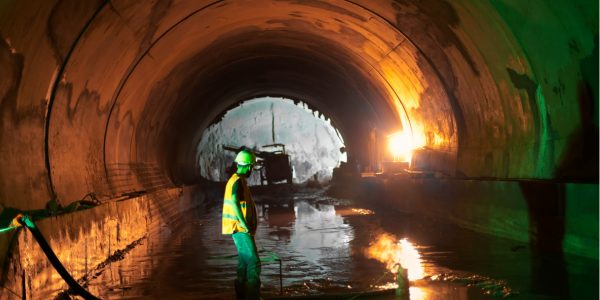
Tunnel Construction
Tunnel construction is the process of creating underground passages for various purposes, such as transportation, utilities, mining, and infrastructure. Tunnels provide efficient routes through obstacles like mountains, bodies of water, urban areas, and geological formations. The construction of tunnels involves specialized engineering techniques, machinery, and safety protocols to ensure the stability, integrity, and functionality of the underground structure.
Key stages of tunnel construction include:
Survey and Planning: Before construction begins, engineers conduct surveys to assess geological conditions, ground stability, and potential hazards along the tunnel route. Detailed planning involves designing the tunnel alignment, cross-section, dimensions, and construction methods based on survey data and project requirements.
Site Preparation: Site preparation involves clearing vegetation, excavating soil, and establishing access points for tunnel construction equipment and personnel. Temporary facilities, such as construction camps, staging areas, and material storage sites, may be set up near the tunnel entrance.
Tunnel Excavation: Tunnel excavation methods vary depending on geological conditions, tunnel size, and project requirements. Common excavation techniques include drill and blast, tunnel boring machines (TBMs), cut-and-cover, and sequential excavation methods (SEM). Excavated material may be removed from the tunnel using conveyor belts, trucks, or railcars.
Ground Support: As the tunnel is excavated, ground support systems are installed to stabilize the surrounding rock or soil and prevent collapses or ground movements. Ground support methods include rock bolting, shotcreting, steel ribs, lattice girders, and precast concrete segments, depending on the excavation method and ground conditions.
Lining Installation: After excavation, tunnel linings are installed to provide structural support, waterproofing, and durability. Linings may consist of concrete, steel, fiberglass, or composite materials, depending on project requirements and ground conditions. Segmental linings are commonly used in tunnel construction, where precast concrete segments are assembled to form a continuous ring inside the tunnel.
Utilities Installation: If the tunnel will accommodate utilities such as water pipes, electrical conduits, or communication cables, these systems are installed during or after tunnel construction. Utility installation may require additional excavation, trenching, or directional drilling techniques.
Ventilation and Lighting: Ventilation systems are installed to provide fresh air circulation and remove pollutants and gases from the tunnel environment. Lighting systems are also installed to ensure visibility and safety for tunnel users and maintenance personnel.
Finishing and Testing: Once construction is complete, the tunnel interior may be finished with coatings, paint, and signage for safety and aesthetics. Structural and functional testing is conducted to verify the integrity, stability, and functionality of the tunnel before it is opened to traffic or put into service.
Tunnel construction requires careful planning, engineering expertise, and coordination among contractors, engineers, geologists, and other stakeholders to ensure successful project delivery. Safety protocols and monitoring systems are essential to mitigate risks and ensure the safety of workers and the public during construction and operation.